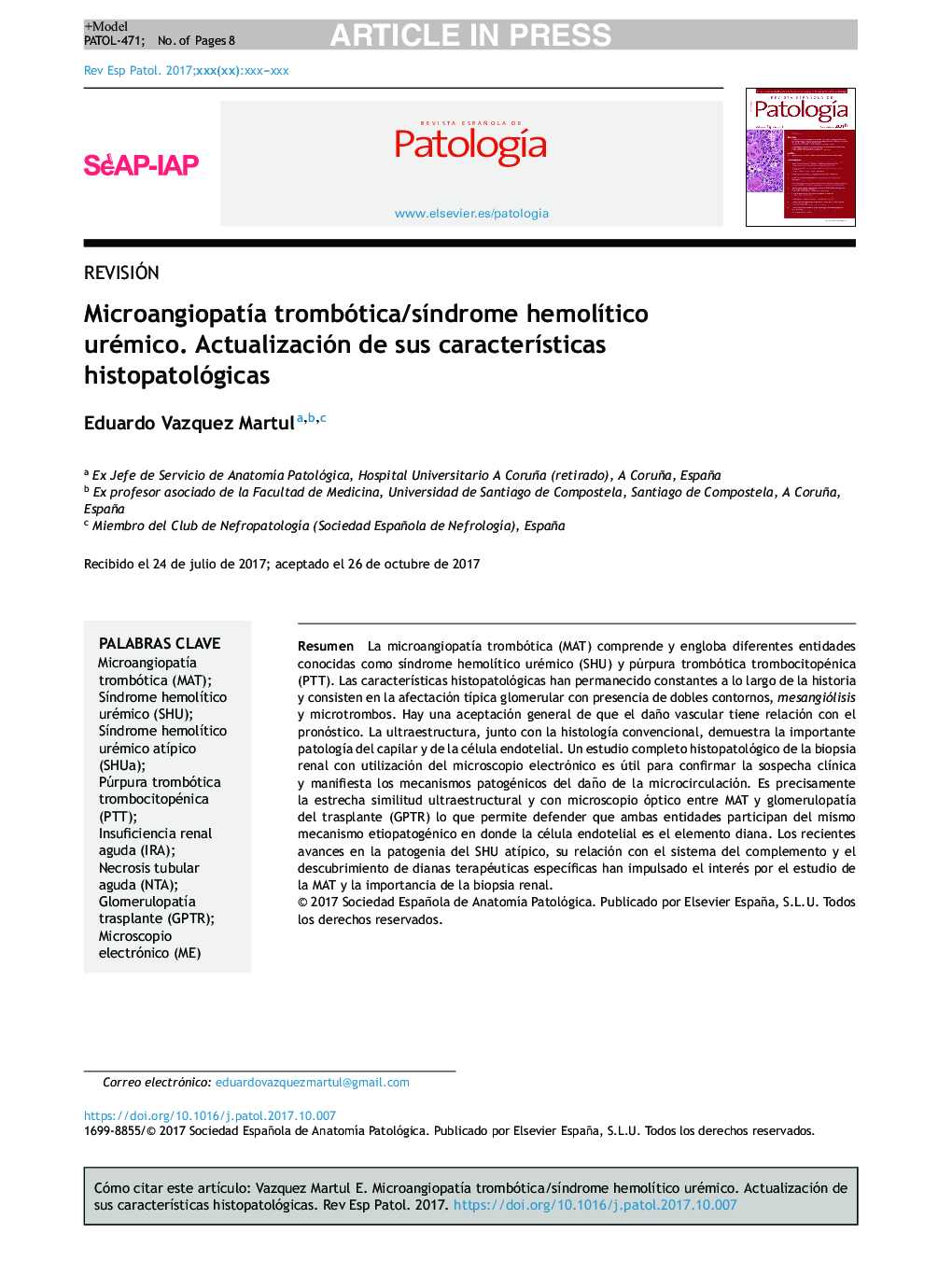| Article ID | Journal | Published Year | Pages | File Type |
|---|---|---|---|---|
| 8807971 | Revista Española de Patología | 2018 | 8 Pages |
Abstract
Thrombotic microangiopathy (TMA) encompasses different entities known as haemolytic uraemic syndrome (HUS) and thrombotic thrombocytopenic purpura (TTP). The histopathological characteristics have remained constant since the initial description and consist in glomerular-type affectation with the presence of double contours, mesangiolysis and microthrombi. It is generally accepted that the vascular damage is related to the prognosis. Ultrastructure, together with conventional histology, shows notable changes in both capillaries and endothelial cells. A comprehensive histopathological study of the renal biopsy, using electronmicroscopy, is useful in the confirmation of a clinical suspicion and demonstrates the pathogenetic mechanisms in the microcirculatory damage. The close resemblance between the ultrastructural appearance and that seen with the light microscope of TMA and transplant glomerulopathy (TG) is precisely what suggests that both entities are subject to the same etiopathogenetic mechanism in which the endothelial cell is targeted. Recent advances in the pathology of atypical HUS, its relation with complement system and the discovery of specific therapeutic targets, has rekindled an interest in the study of TMA and the importance of renal biopsy.
Keywords
Related Topics
Health Sciences
Medicine and Dentistry
Pathology and Medical Technology
Authors
Eduardo Vazquez Martul,
